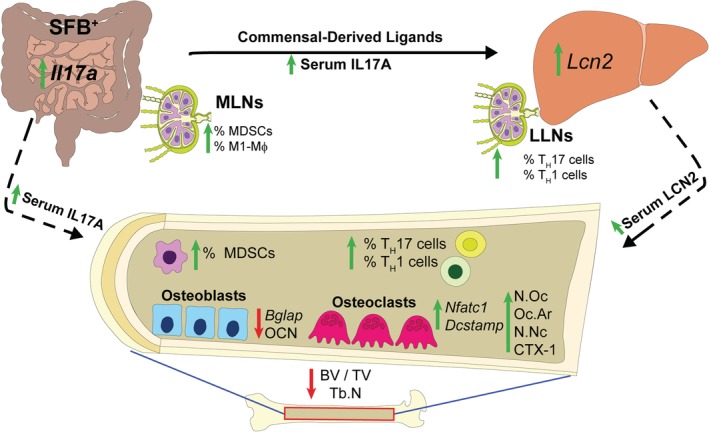Figure 10.

Schematic of segmented filamentous bacteria (SFB) osteoimmunoregulatory effects in postpubertal skeletal development. The presence of SFB drives the expression of Il17a in the ileum. SFB colonization in the gut promotes commensal‐derived molecular ligands/metabolites and circulating IL17A, supporting innate immune responses in the mesenteric lymph nodes (MLNs) and in the liver. SFB upregulated LCN2 in the liver and serum, which supports the notion that SFB osteoimmunomodulatory actions are mediated in part through a gut–liver–bone axis. SFB increased proinflammatory immune response effects in the lymphoid tissues draining the gut and liver, as well as the bone marrow, which suppressed osteoblastogenesis, enhanced osteoclastogenesis, and blunted trabecular bone microarchitecture. SFB critically impacts commensal gut microbiota immunomodulatory actions regulating normal postpubertal skeletal growth and maturation. BV/TV = trabecular bone volume fraction; LLN = liver lymph node; MDSCs = myeloid‐derived suppressor cells; N.Nc = number of nuclei; N.Oc = number of osteoclasts enumerated within four fields of view per well; Oc.Ar = osteoclast area; OCN = osteocalcin; Tb.N = trabecular number.
